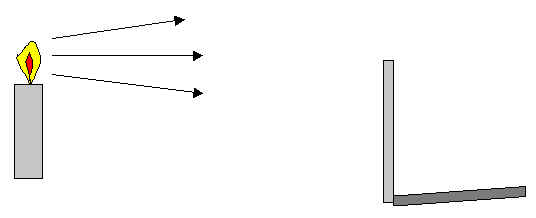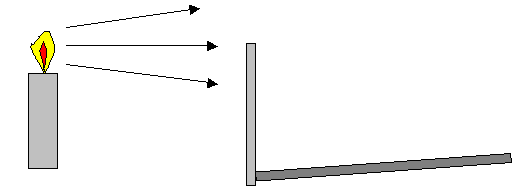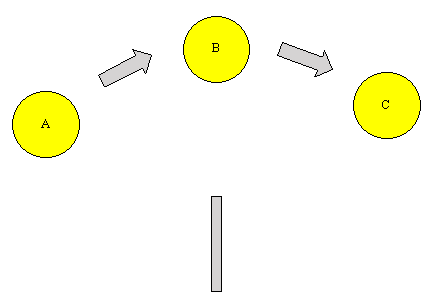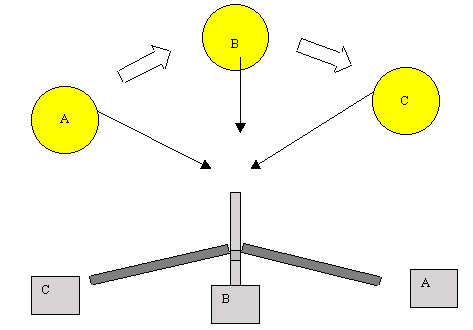
Light (2)
This is the second part of our light block. In the first part we looked at materials and in this part we will deal with shadows.
Here are some key facts about light that you need to remember:
Light travels in straight lines.
Light comes from natural and human made sources.
Objects can be transparent, translucent, or opaque.
Opaque materials form shadows.
Look at the table and see if you can see any patterns in opaque materials:
| Material | Does light go through it? | Are Shadows formed? |
| wood | No | Yes |
| metal | No | Yes |
| plastic | No | Yes |
| cardboard | No | Yes |
| brick | No | Yes |
What do you notice about opaque materials?
Answer
Answer. Opaque objects do not let light through.
They all form shadows.
Opaque objects can be shiny or dull.
Shiny objects reflect light very well.
Shadows
Light travels in straight lines. Anything that blocks the light will cast a shadow.

Notice how the shadow is behind the object and contains no detail, it is just an outline.
What do you think will happen to the shadow if we move the object closer to the light source (candle)?
Will it get bigger or smaller?
Here is the answer
The shadow gets bigger, because more of the light is blocked out.

Shadows and the Sun.
Did you know that early in the morning and late in the afternoon shadows are longer than in the middle of the day?
Look at this picture below and see if you can predict the length and direction of the shadow for the positions of the sun A, B and
C?

Here is the answer.

Both A and C are longer than B. (in fact if the sun was directly above b there would be no shadow at all).
Notice how the shadow is always formed in a direction opposite to the direction of the source.
If you want to see this effect you can try it yourself by walking under a streetlight.
As you approach the light you will see your shadow get shorter and shorter until you are directly under it. After you pass it your shadow is in front of you and getting longer.
Well that is our brief revision of light.
You need to remember the facts below.
Light travels in straight lines.
Light comes from natural and human made sources.
Objects can be transparent, translucent, or opaque.
Opaque materials form shadows.
Good luck!